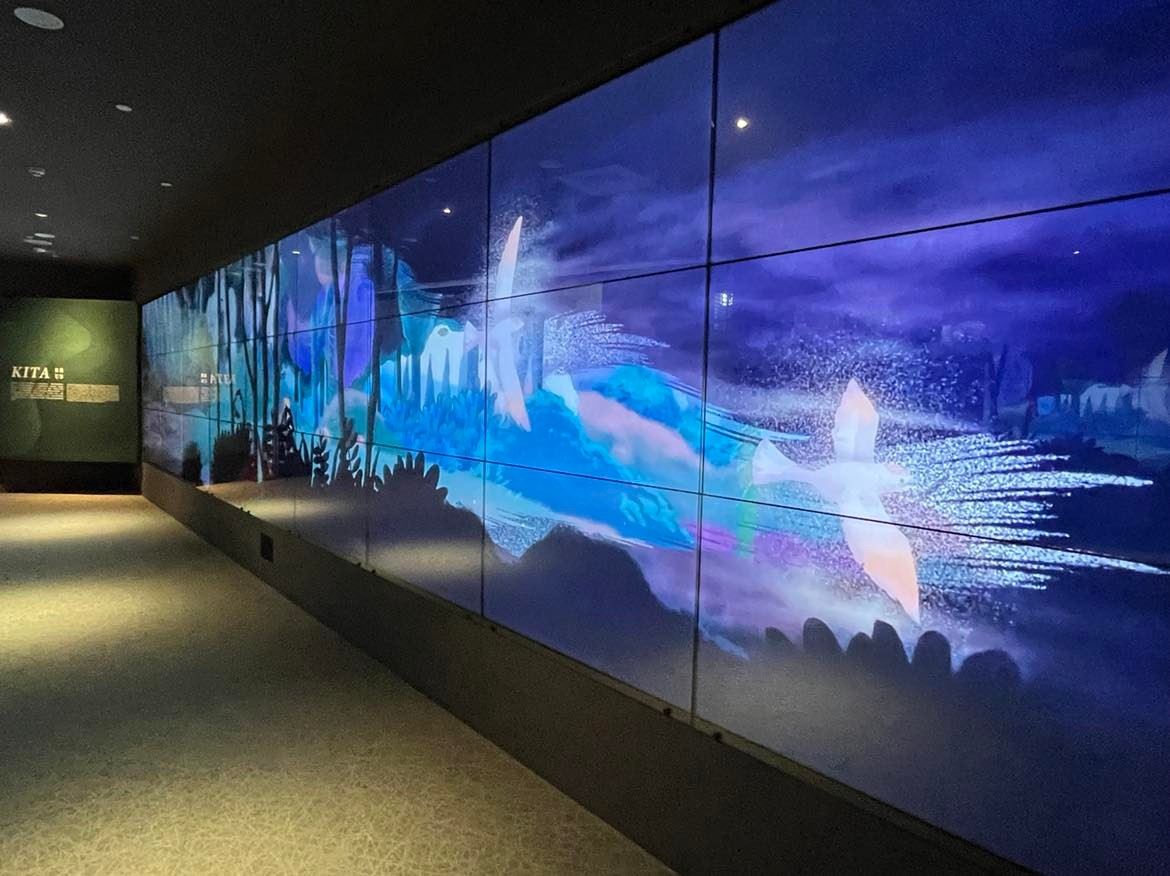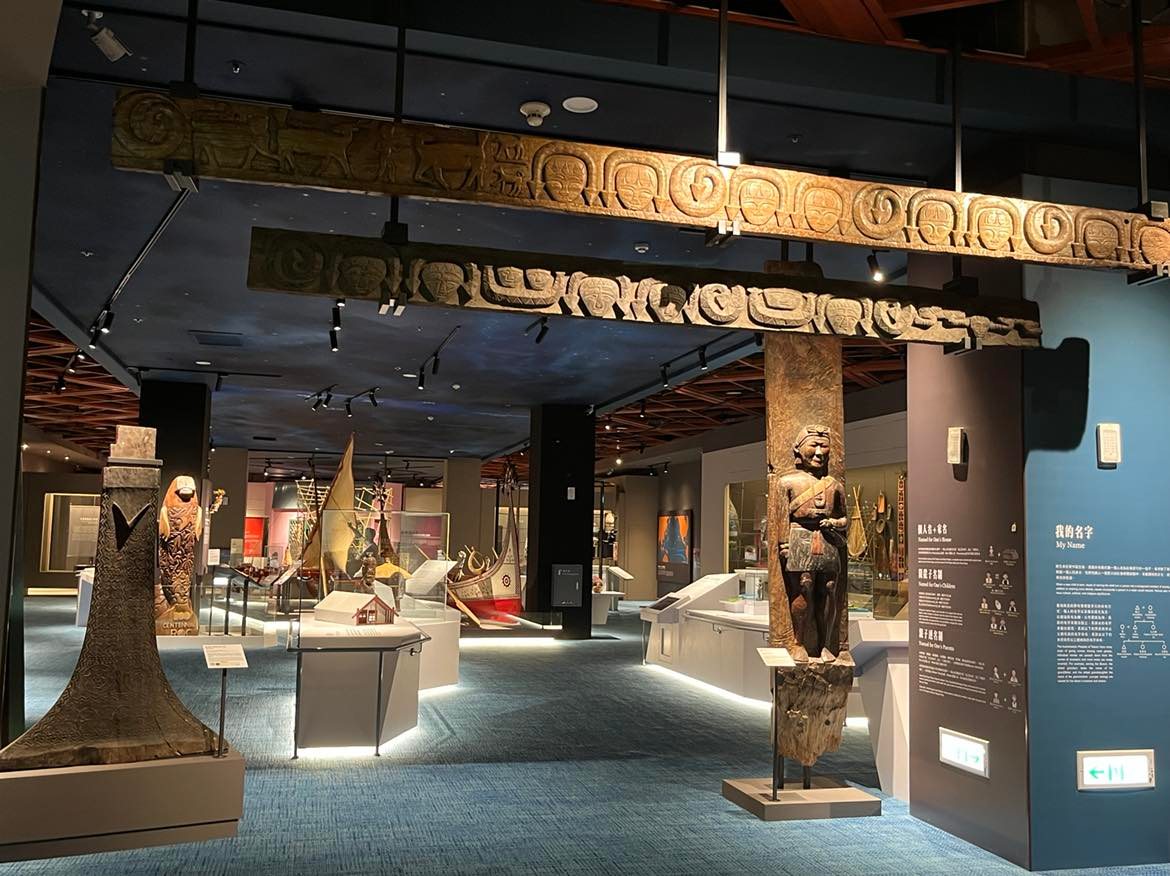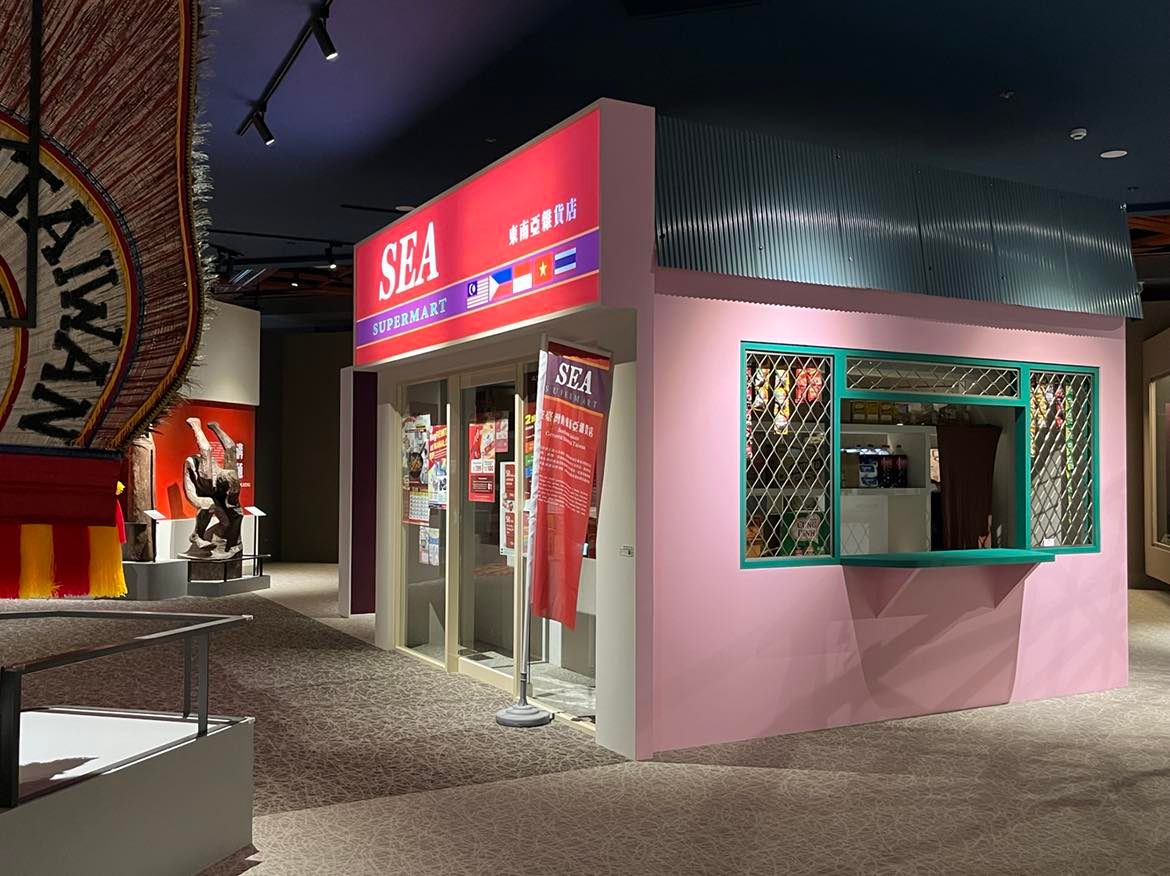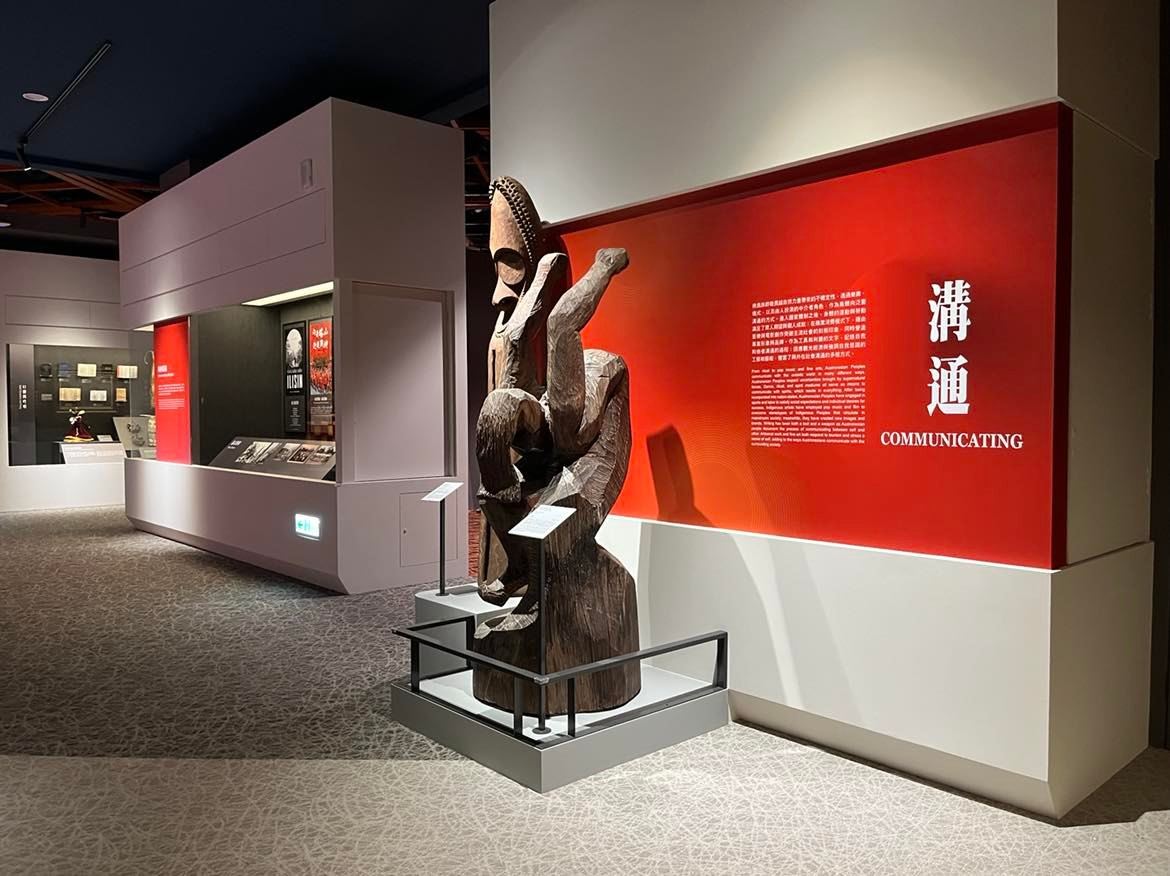Austronesian Worlds, Worldly Austronesias

Austronesian Worlds, Worldly Austronesias is a permanent exhibition on the continual movements and entangled stories of different ethnic groups across diverse Austronesian worlds. Located on the Pacific Ocean, Taiwan has long been an important node of human migrations and cultural development. This exhibition is not about “the Others.” Rather, it concerns the Austronesian worlds in which we live and worldly Austronesias engaged in complex negotiations with global forces.
Kita Us

Austronesian languages have two ways of saying “we.” For example, in Malay, one can either say “kami,” which excludes the listener, or include the listener as part of the “we” by saying “kita.” We start out this exhibition from an Austronesian perspective, showing who “kita we” who live here are through stories from Taiwan, Island Southeast Asia, and Oceania: our legends of how the world was created, our stories of cultivation, trade, migration, and colonial encounters. Through these legends and stories, we have woven memories of our movements across the great expanses of the ocean, where the convergence of different peoples has created diverse histories. As we tell you our stories, we maintain that myth is no less substantial than history and that science is no more authoritative than storytelling. The unique island experiences and oceanic philosophy of Austronesian worlds are not merely local knowledges. They contain wisdom that shall inspire the entire world.
Understanding

Austronesian Peoples have developed many different, culturally specific practices in which they create knowledge of the natural world and its principles, understand the present, and represent the past. These ways of knowing the world both follow ancestral wisdom and, at the same time, are transformed over time and through contact with other peoples. As Austronesian Peoples confront the modern world, they use these local knowledges as they adopt new ways to establish relationships among individuals, between individuals and social groups, and between people and the natural environment.
Bordering

More than just lines drawn upon physical space, borders imply abstract concepts such as sovereignty and territory, classification and separation, movement and crossover, order and security. These characteristics of borders are shared across different cultures and social phenomena. Looking at examples of bordering from Austronesian worlds lets us recognize several characteristics of borders.
Exchanging

Exchange is a very important activity in Austronesian worlds, with implications for subsistence, economics, politics, and ritual. In their historical encounters within and beyond the region, Austronesian Peoples used exchange to acquire necessary goods, luxury goods, and symbolic items that proclaim social status. Foreign goods undergo transformation to become objects treasured by a group and, sometimes, contemporary symbols of identity. The flows and circuits of exchange establish networks and transmit new ideas, ways of life, social relations, religious beliefs, and power structures, gradually transforming the face of local Austronesian societies.
Communicating

From ritual to pop music and fine arts, Austronesian Peoples communicate with the outside world in many different ways. Austronesian Peoples respect uncertainties brought by supernatural forces. Dance, ritual, and spirit mediums all serve as means to communicate with spirits, which reside in everything. After being incorporated into nation-states, Austronesian Peoples have engaged in sports and labor to satisfy social expectations and individual desires for success. Indigenous artists have employed pop music and film to overcome stereotypes of Indigenous Peoples that circulate in mainstream society; meanwhile, they have created new images and brands. Writing has been both a tool and a weapon as Austronesian people document the process of communicating between self and other. Artisanal work and fine art both respond to tourism and stress a sense of self, adding to the ways Austronesians communicate with the surrounding society.
Identifying

Identity may derive from a sense of shared ancestry or way of life. Producing a mutual understanding between the self and others, identity creates a sense of belonging and security. Responding at the same time to the external environment, identity draws boundaries that exclude others while also flexibly incorporating them. From the 18th century, Austronesian Peoples became the objects of colonialism as they were incorporated within the empires of more powerful countries. Following the end of World War II, waves of decolonization and independence have ebbed and flowed. Whether these movements employed violent or non-violent means, they have all aimed to gain political rights and a more equitable distribution of power. Decolonization movements have also built a cultural sense of self as the basis of new identities. Urged by Indigenous activists to recognize that “No One is an Outsider,” we realize that we are all in the same boat: only by honestly reflecting on history can we work together to build a common future.